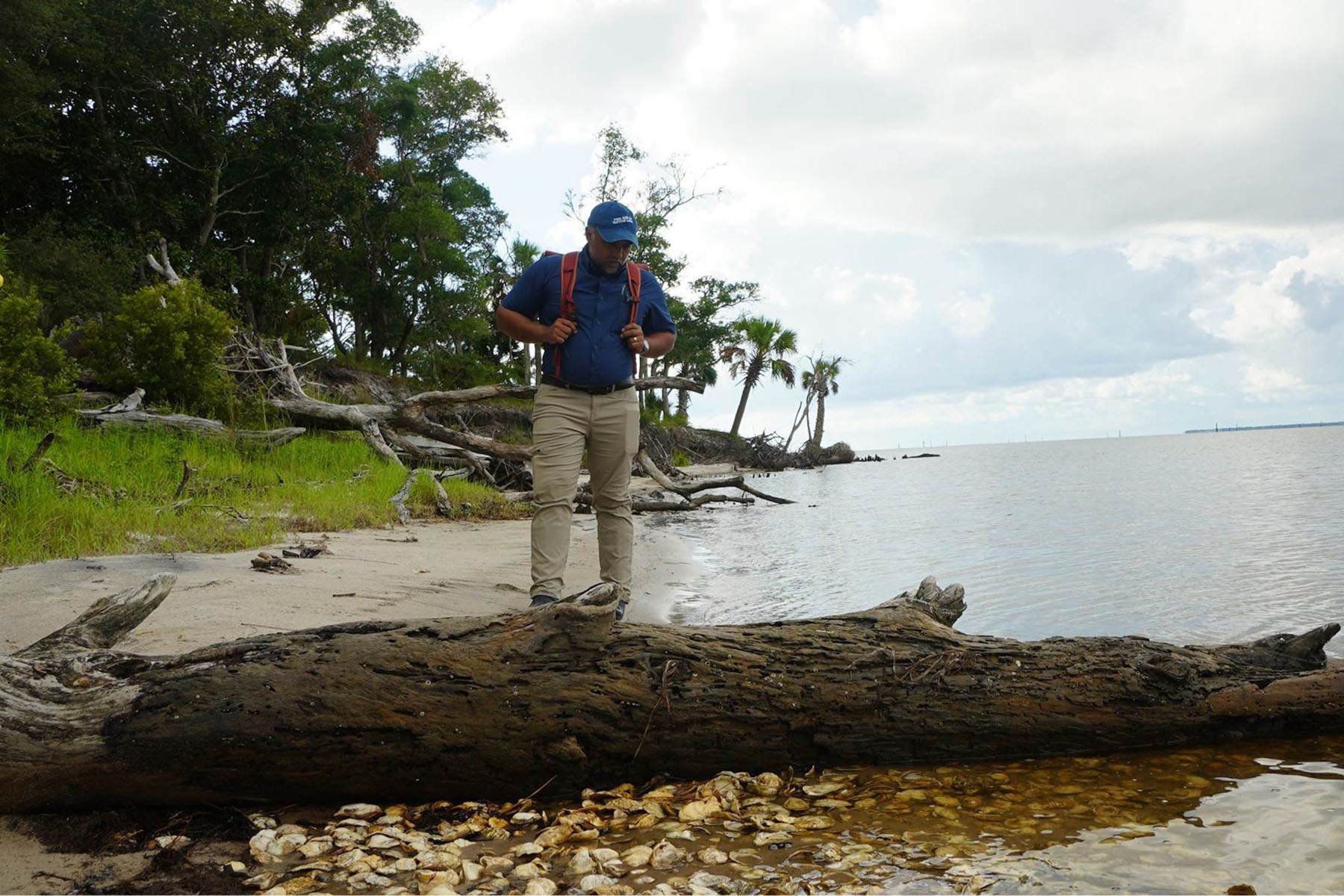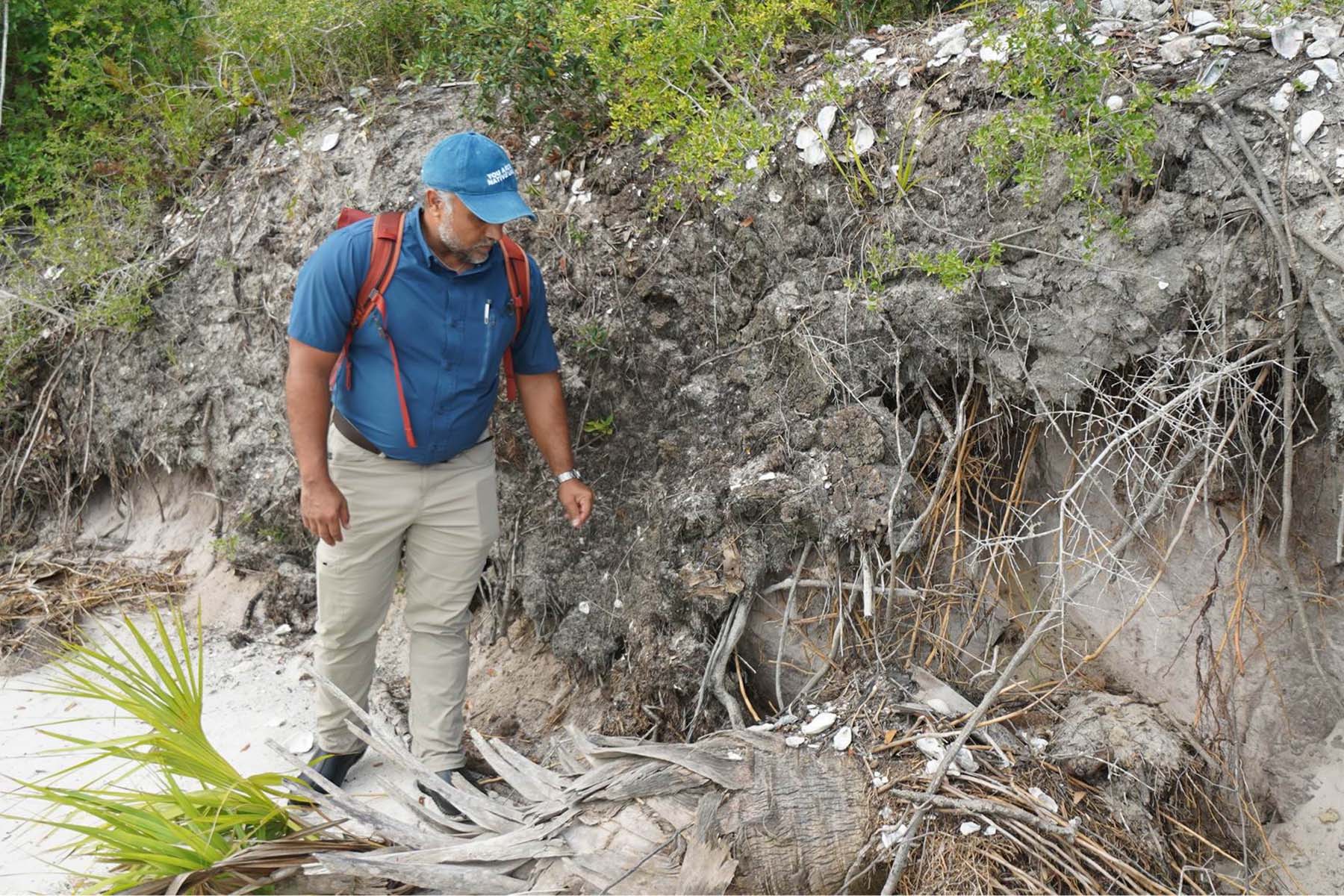
Florida State University researchers say the best way to protect coastal landscapes from extreme weather and rising seas is to manage natural and cultural resources together.
In a new study, FSU archaeologists Jayur Madhusudan Mehta and Mark D. McCoy in the Department of Anthropology argue that current coastal management efforts overlook key cultural sites, putting both ecosystems and heritage at risk. Their research shows that historic Indigenous sites, especially shell mounds and middens, are deeply tied to coastal landscapes yet are often left out of planning and funding decisions.
“We found that in Florida’s Big Bend region, 11 Indigenous sites are already at or below sea level, and 142 mound and midden sites — heaps of various discarded materials indicating past human activity like shells and bones — are at risk of being submerged in the next century,” said Mehta, the paper’s first author. “In the Mississippi Delta, 11 Indigenous cultural sites are at or below sea level, and 107 mound and midden sites are at risk of being submerged in the next century, which will harm biodiversity, local resilience and cultural sovereignty.”

The study, “Preserving coastal environments requires an integrated natural and cultural resources management approach,” was published by the Proceedings of the National Academy of Sciences Nexus this spring.
Today, U.S. coastal counties are home to 40 percent of the nation’s population, according to the National Oceanic and Atmospheric Administration, continuing a legacy of coastal living that dates back approximately 15,000 years. Cultural heritage sites, like earthen mounds, shell mounds and shell-bearing landscapes, are also integral components of coastal ecosystems, as these sites enhance biodiversity by creating microhabitats for animals and fauna while preserving valuable historical remains.
“Preserving coastal environments is urgent because the effects of rising sea levels and the gradual caving in or sinking of land threaten both ecological stability and irreplaceable cultural heritage.”
— Jayur Madhusudan Mehta,
associate professor and undergraduate program director, Department of Anthropology
“Preserving coastal environments is urgent because the effects of rising sea levels and the gradual caving in or sinking of land threaten both ecological stability and irreplaceable cultural heritage,” Mehta said. “Coastal degradation not only erases history; it also reduces the natural buffering capacity of marshes and deltas, which play a crucial role in stabilizing coastlines, reducing soil erosion and protecting against extreme weather.”
The team analyzed data collected from remote sensing and state repositories, including light detection and ranging digital elevation models, site location data and sea level rise models from NOAA, in order to define natural and cultural impacts and highlight risk factors in the U.S. Gulf Coast regions of Florida’s Big Bend and Louisiana’s Mississippi Delta.

To apply their findings outside of the U.S., researchers compared site vulnerabilities and risk frameworks to analyze differences and similarities in extreme weather and environmental impact vulnerability across the Netherlands, Peru and Oceania, a region encompassing the islands of the Pacific Ocean, including Australia and New Zealand. The variables considered through these comparisons underline the need for place-specific strategies that combine heritage conservation and climate adaptation to protect different coastlines around the world.
“In the Netherlands, dense networks of earthen levees and storm barriers reduce risks of sea-level rise, but drought and salinization threaten wetland heritage,” Mehta said. “In Peru, archaeological loss stems more from agro-industrial expansion and El Niño climatic events, an irregularly occurring period of warm water near Peru and Ecuador.”
Although differences in archaeology and environment across locations may lead to different management tactics, researchers argue that despite location, cultural resources play a key part in the management of coasts.
“Today, we understand better than at any point in history the factors that disrupt and destroy coastal environments. If we do nothing about it, we’ll lose important biodiversity and human history, the same aspects we try to preserve and display in zoos and museums.”
— Mark D. McCoy, professor and chair, Department of Anthropology
“Today, we understand better than at any point in history the factors that disrupt and destroy coastal environments,” McCoy said. “If we do nothing about it, we’ll lose important biodiversity and human history, the same aspects we try to preserve and display in zoos and museums.”
Additional authors include Louisiana State University adjunct professor Matt Helmer, Oregon State University professor Haizhong Wang, Texas A&M University assistant professor Siyu Yu, and Dutch colleagues Liz Chamberlain and Roy van Beek –– both assistant professors at Wageningen University & Research, the Netherlands.
To learn more about research conducted in the Department of Anthropology, visit anthro.fsu.edu.



